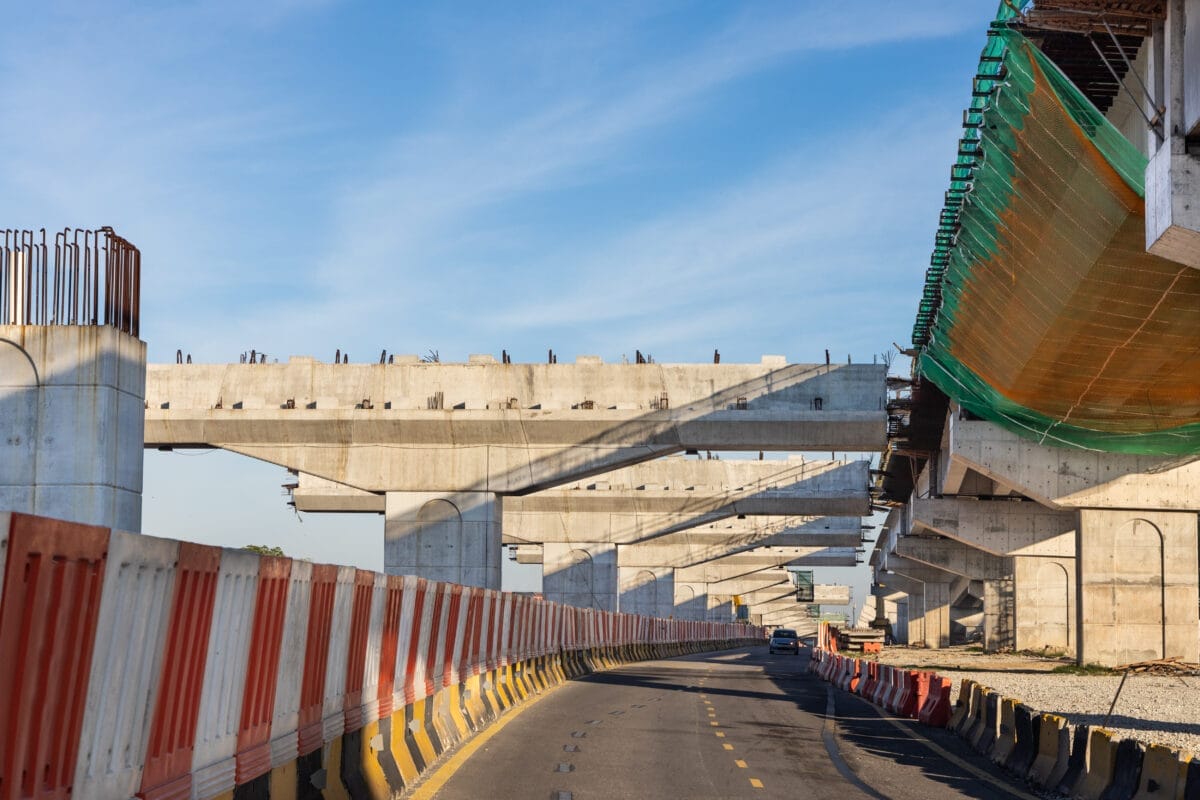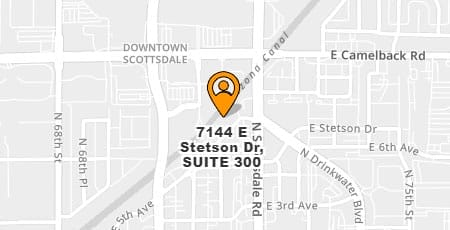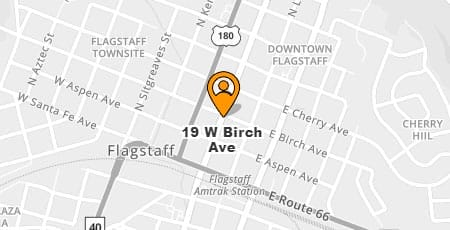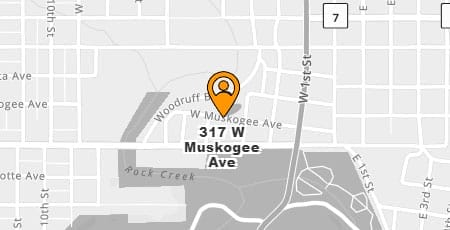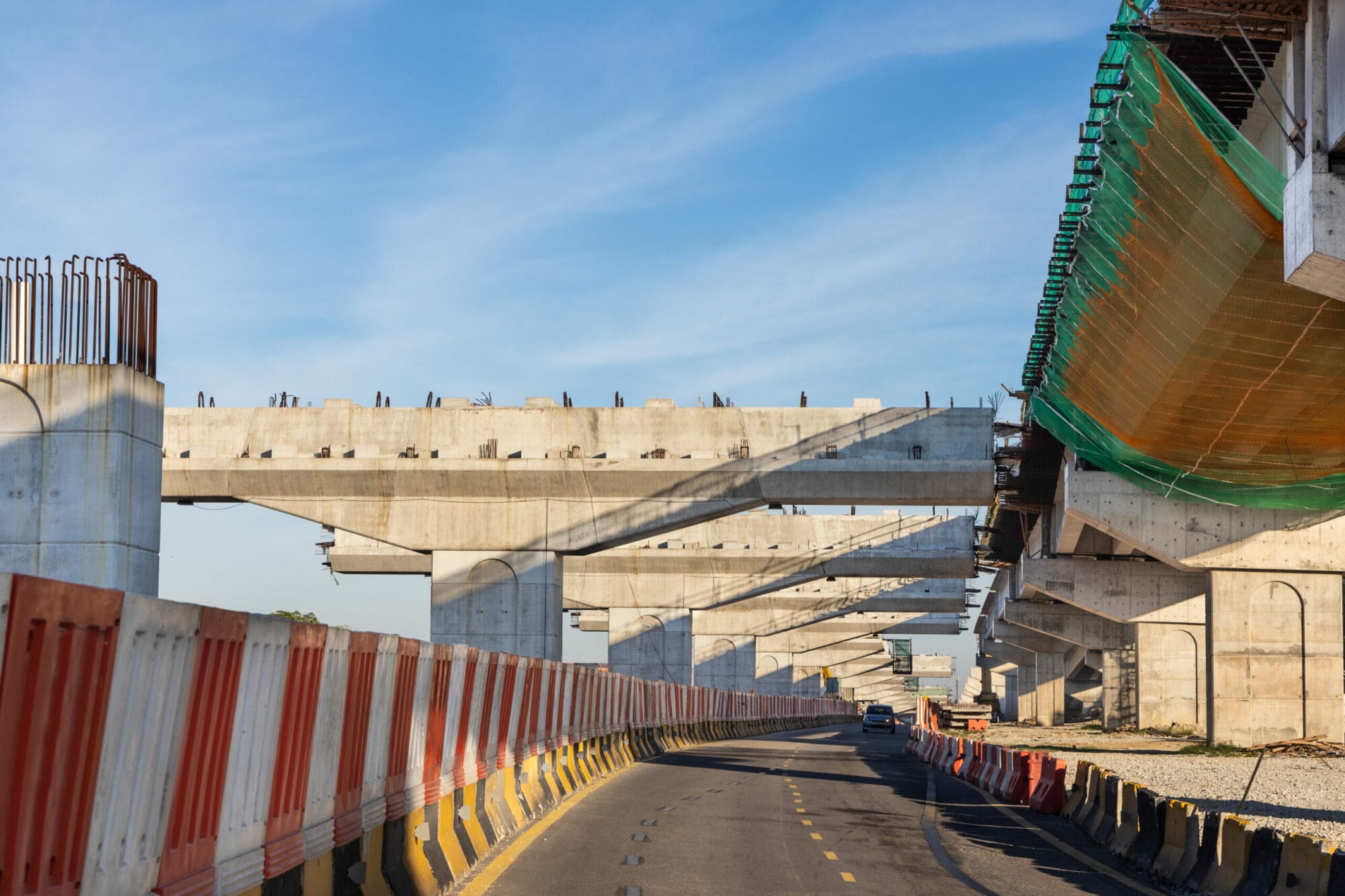
By Madelaine Braggs | Rose Law Group Reporter
Arizona is laser focused on maximizing the $3.4 billion of funding for infrastructure improvements granted by the Biden administration’s Bipartisan Infrastructure plan. The state will receive approximately $2.5 billion for transportation to invest in roads, bridges, public transit, ports and airports and roughly $508 million for clean water. Local lawmakers at this month’s Pinal Partnership panel, moderated by Rose Law Group founder and president Jordan Rose, said those investments were long overdue in Pinal County.
City of Maricopa Mayor Nancy Smith said, “Despite everything that the federal government and state government has done to try and keep up with infrastructure, we’re just further behind. Arizona is 47th in the country in terms of keeping up with transportation infrastructure revenue.”
She says while the state is putting the resources to good use, there’s still a need for long-term planning, and the key to future sustainability will be increased revenue.
“The federal government hasn’t updated their transportation or gas tax since 1993. It’s currently at 18.4%. Arizona last updated our gas tax in 1991 and is sits at 18 cents, the national average is 26 cents, so we are way behind the curve.”
For this reason, U.S. Representative Juan Ciscomani told the panel that he was particularly excited about serving on the Appropriations Committee, with significant influence over the federal budget and allocations to his home state. “Roads matter. These are the kinds of things that matter to real people, real issues.”
Rep. Ciscomani says water and roads are the top two priorities for his Pinal County constituents. In his first year on the job, he was able to bring home $27 million in federal funding to his district (AZ-06). “Through the infrastructure improvement jobs act, there’s a lot of grants and money available that we can bring home.”
He says he also added official language to the direction of the U.S. Department of Transportation to prioritize funding to the western inner mountain of the United States. “When we get these calls, we answer them. We’ll be getting ahead of it, writing letters of recommendation, and making phone calls.”
And the work’s not done. Arizona took on a hefty project expanding I-10, something that experts say is especially important for the state’s growth and economic development, despite the temporarily inconvenient construction for commuters.
Greg Byres, Deputy Director and State Engineer at ADOT, says they recently applied for three grants to close a funding gap for that expansion. “There’s a $25-million gap that we’re trying to fill in the most southern 10 miles of the corridor, from 387 North, just shy of the Casa Blanca interchange. The total project was $289 million dollars for that section, so we have a lot of funding already covered and we just need that little piece.”
While the Phoenix highways make their progress, ADOT’s #1 priority, according to Byres, is in Pinal with the North-South corridor, as it’s currently dubbed. A more official naming process will happen down the line.
This year, the department initiated additional engineering and environmental studies to refine the North-South Corridor from a 1,500-foot corridor to a proposed 400-foot freeway alignment, identify the location of interchanges and other design features. There are two studies being conducted, the US 60 to Arizona Farms Road (Segment 1) and the Arizona Farms Road to Interstate 10 in Eloy (Segment 2).
Byres said one of the most noticeable changes to the plan proposal was removing the SR-24 from the study, due to opposition about the alignment. “Rather than spending money that is not popular and not the true means of how SR-24 will be routed, we just eliminated it from that part of the study.”
ADOT’s goal is to route it all the way to tie into U.S. 60 in a way that makes sense and generates the traffic flow that needs to occur in the East Valley. The original idea truncated the SR-24 at the North-South Corridor and Byres says the new alignments that have been proposed by Pinal County are promising, but need to be developed a little bit further to ensure Arizona will be eligible for federal funding in the future and “to make sure we can get as much money as possible and keep [transportation] funded and maintained once the funding is put into place.”
For now, Tier 2 is going to hearing, although no final date or location has been set.
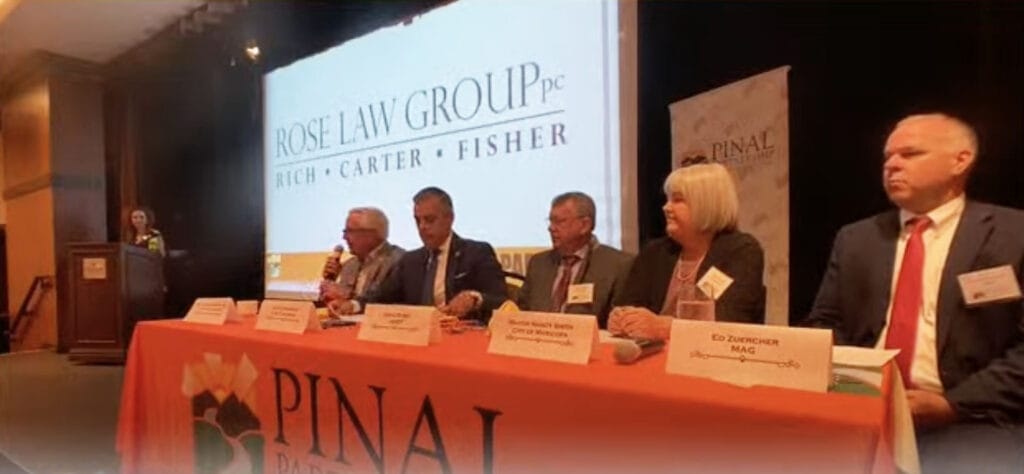
Ed Zuercher, Managing Executive Maricopa Association of Governments reminds us Pinal is “very lucky” because state law allows the county to determine its own destiny without having to go to the legislature, unlike in Maricopa County. Due to the size of Maricopa’s transportation infrastructure, Maricopa County needs permission from the legislature to go to the voters to extend the half-sales tax for transportation.
Zuercher said, “Prop. 400 is a little different because it’s a Maricopa County only sales tax, so we can’t extend into Pinal County, but it’s super critical to the things Pinal is trying to accomplish. Prop. 400 ends in 2025 and then we hope the voters will vote to extend that another 20 years.”
Part of the revenue will fund the widening of I-10 down to the Maricopa-Pinal county line. Zuercher says, “This is important because ADOT can use that Maricopa money as match for all the federal money that Congressman Ciscomani is working hard to get through the federal process here. The Maricopa money, while it can’t come out of the county, the freeway doesn’t really recognize those borders, as terms as funding for the feds.”
He says, “It’s important to extend the sales tax and while it feels Maricopa centric, it really extends out in benefit to our Pinal County partners… People need to think of it as a 20, 30, 60 year plan and not think of it as a ‘What do I get out of it tomorrow?’ decision.”
While Maricopa County hopes their half-cent tax is approved in 2025, Pinal County voters have already spoken. After Prop. 469 was rejected by voters last November, Casa Grande Mayor Craig McFarland says Pinal is planning to reintroduce their own regional half-cent tax at a later time. It’s projected to generate nearly $1.1 billion dollars over 20 years.
Mayor McFarland says, “We decided to delay trying to go back for another vote for another year, and support the county in the first half-cent sales tax, which will be on the ballot November 2024, and then we will put the prop back on the ballot in 2025.”
He says it would likely be a single-issue special election with mail-in ballots. But before re-introducing the regional plan, local leaders are still gathering public input. “We’re getting feedback from all the members in all the municipalities in the county. The idea is that we’ll take a county wide plan, that would potentially look like the Phoenix system.”
Looking ahead, Mayor Smith suspects that due to emerging popularity in electric vehicle technology, the gas tax, as currently structured, will become increasingly unreliable as a means of consistent revenue. “Fewer people are purchasing gas, plus the gas tax is so far behind. It’s creating a need for additional funds and I think it’s time for us to take a look at how we change this so it brings in the amount of revenue that’s needed for funding the transportation needs of the state.”
However, increasing the gas tax isn’t the only solution being considered. “It doesn’t have to necessarily be raising the tax, it could be looking at an additional fee for those hybrid or electric cars that don’t use gas. It could be a combination of things but we need to put together a team to study solutions so we can get on it.”

